Armyworms Moving into the Midwest
by Maureen Wise, on August 31, 2021
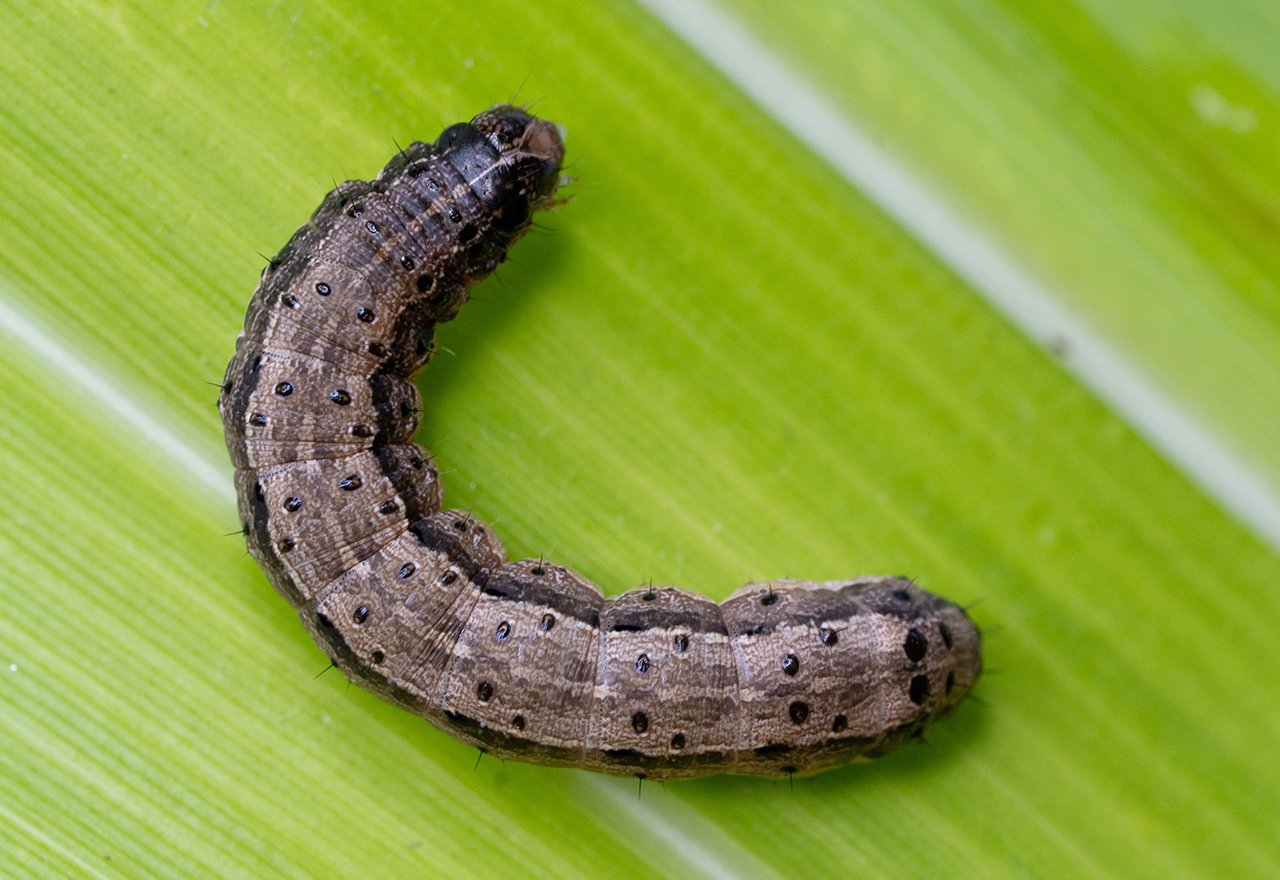
There’s a new threat to your lush lawn this year in the Midwest: the Fall Armyworm. The thing is, they’re not worms and your organic lawn will probably recover easily if you see an invasion. For a quick overview, view the Armyworm news feature here.
What is an Armyworm?
The Fall Armyworm (Spodoptera frugiperda) is one of many kinds of armyworms in the Noctuidae family. The worms are actually the larval caterpillar of a moth. These caterpillars feed quickly and in groups, accessing the landscape in waves, causing significant damage to large swaths of lawn, turf, or agricultural fields.
The moths, or adults of Fall Armyworms, are only about an inch and a half long, with a grey or brown top wing/forewing and a lower white wing. Like all moths, they are attracted to lights at night which is when they mate. Females can lay up to a thousand eggs in a clump or mass per evening. Eggs are often laid on the underside of structures or trees. After they hatch from the eggs, larvae (the caterpillars) often use silk like a spider to lower themselves to the ground. These caterpillars are most active in the early morning or late evening hours, eating anything in sight.
After the larvae stage, Fall Armyworms become pupae, which do not damage lawns but bury themselves into the soil and then emerge as moths after about ten days. The life cycle can produce three generations each Summer. Armyworms prefer young grasses and wet conditions. They show preference to Ryegrass, Fescues, and Bluegrasses but will eat just about anything and can also cause damage to flower gardens, landscaping, and crops. Turf Type Tall Fescue (Good Nature Tuff Turf) and Perennial Ryegrass enhanced with a natural fungus called an endophyte may be somewhat more resistant to armyworm feeding than older grass varieties. Armyworms do not survive cold Winters and so may not even be an issue next Summer.
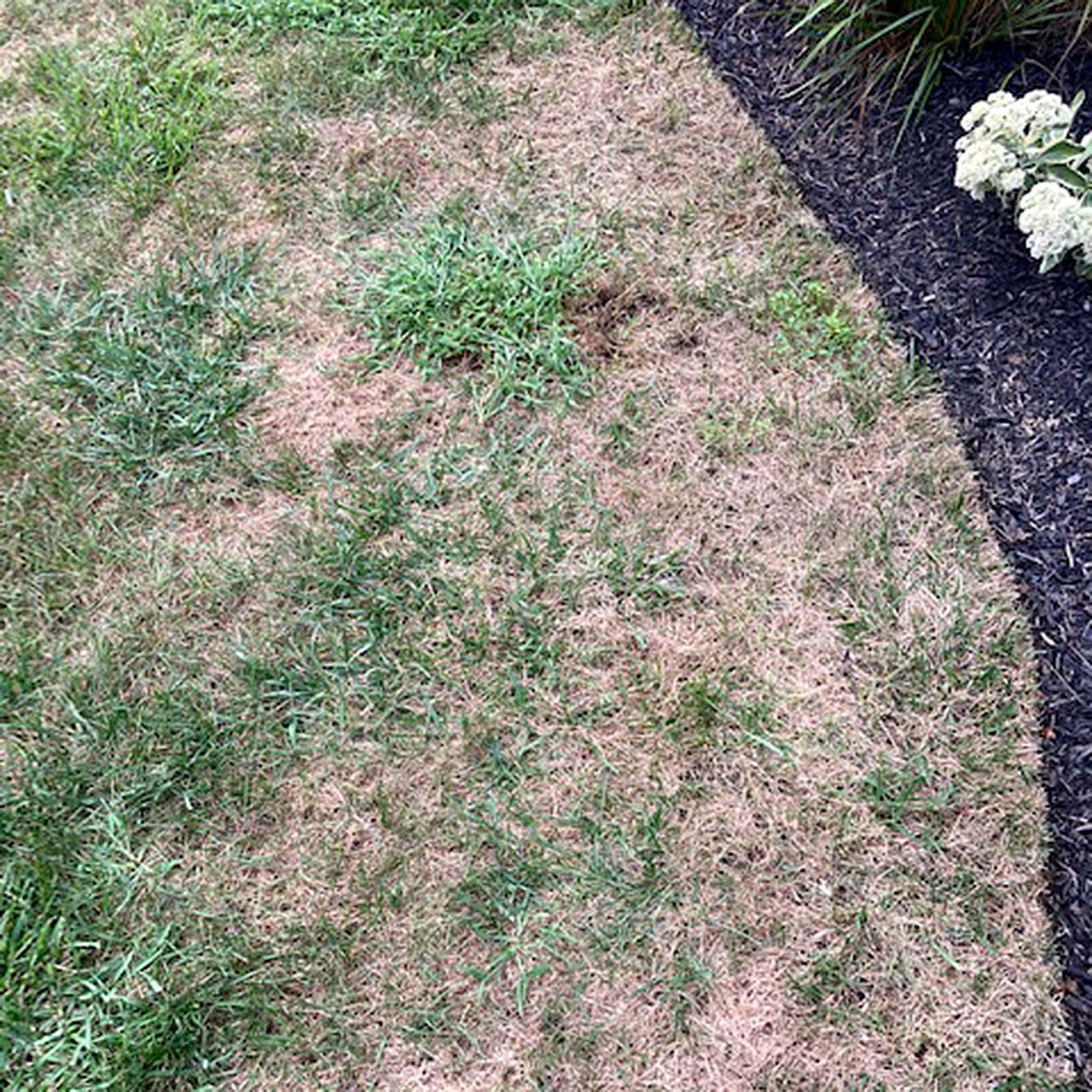
How to Identify Armyworms
Armyworms move en masse from one section of the lawn to another, gradually turning areas brown, starting with the tips of the grass blades. Eventually, large areas of grass look dry, discolored, or dead. One way to identify the problem insects in your lawn is to do a soap test, or flood them out. Mix three tablespoons of liquid dish soap with a gallon of water. Pour your soapy water in a three-foot square and watch what comes to the surface, scouting for Fall Armyworms especially. The caterpillar’s most notable features include three light (white to light yellow) stripes on their backs and an upside-down Y between their eyes. Their bodies are brown to grey.
Preventing Armyworms Naturally
A healthy lawn is the best prevention to protect against both weeds and pest insects. We recommend mowing high – 3.5 inches – and avoiding frequent watering. We also like an annual Organic Compost Top Dressing to feed your soil. A lawn that is not over-watered or over-fertilized will be less attractive to Fall Armyworms. We also recommend adding beneficial nematodes, such as Beneficial Nematode Natural Grub Killer, to your soil. These microscopic predators eat grubs, weevils and fleas and ticks from the inside out. Our Organic Grub Control and Spring Insect Control services won’t guarantee that you avoid Armyworms, but it will help reduce the chances of problems.
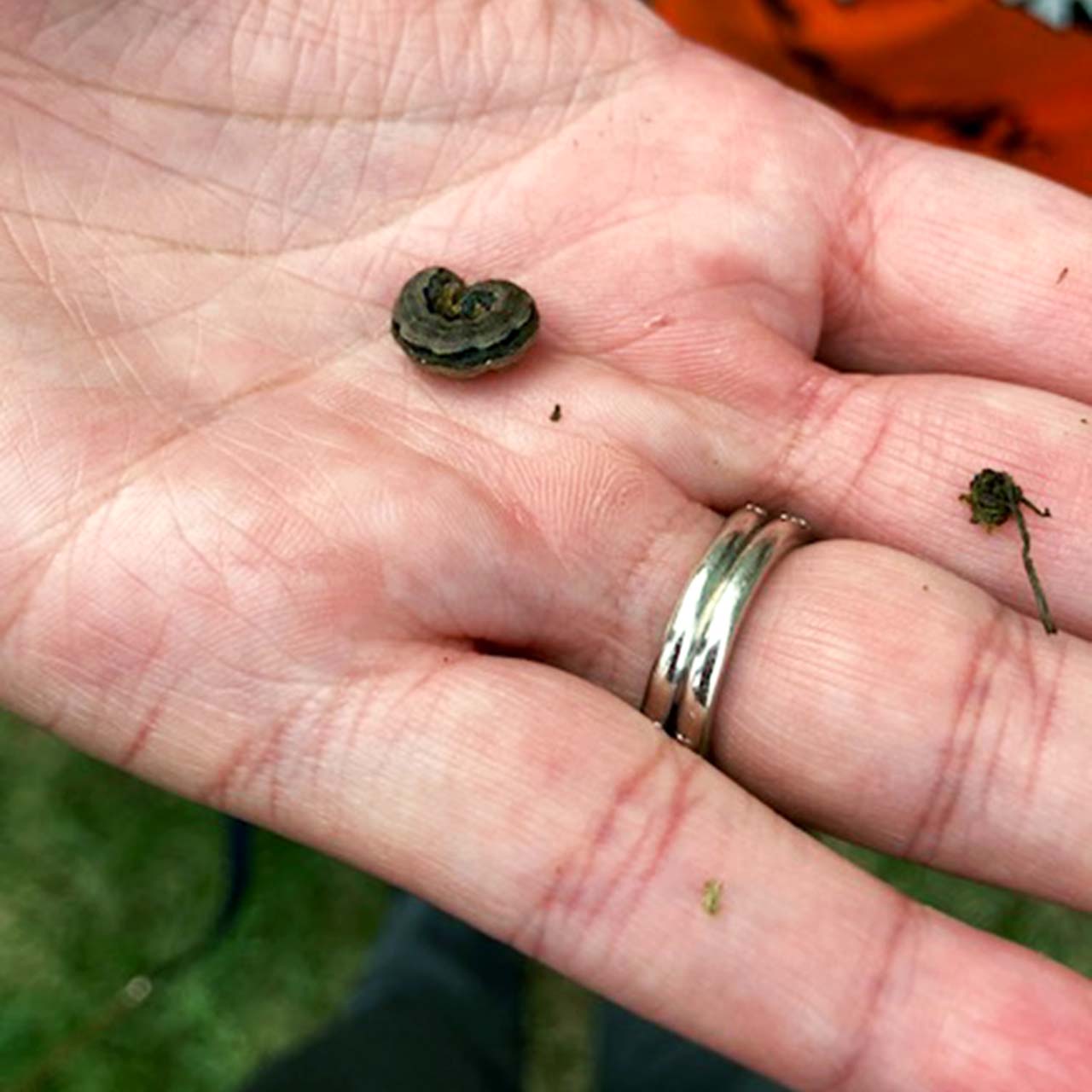
How to Fight Armyworms Without Chemicals
Like any pest in your lawn, we want to try to target just that individual problem and keep beneficial insects healthy such as honeybees and butterflies. The good news is that there are a number of natural solutions to an Armyworm problem. If you notice Armyworm damage, you’re going to want to do one of the following treatments and water your lawn regularly in order to keep the crowns alive.
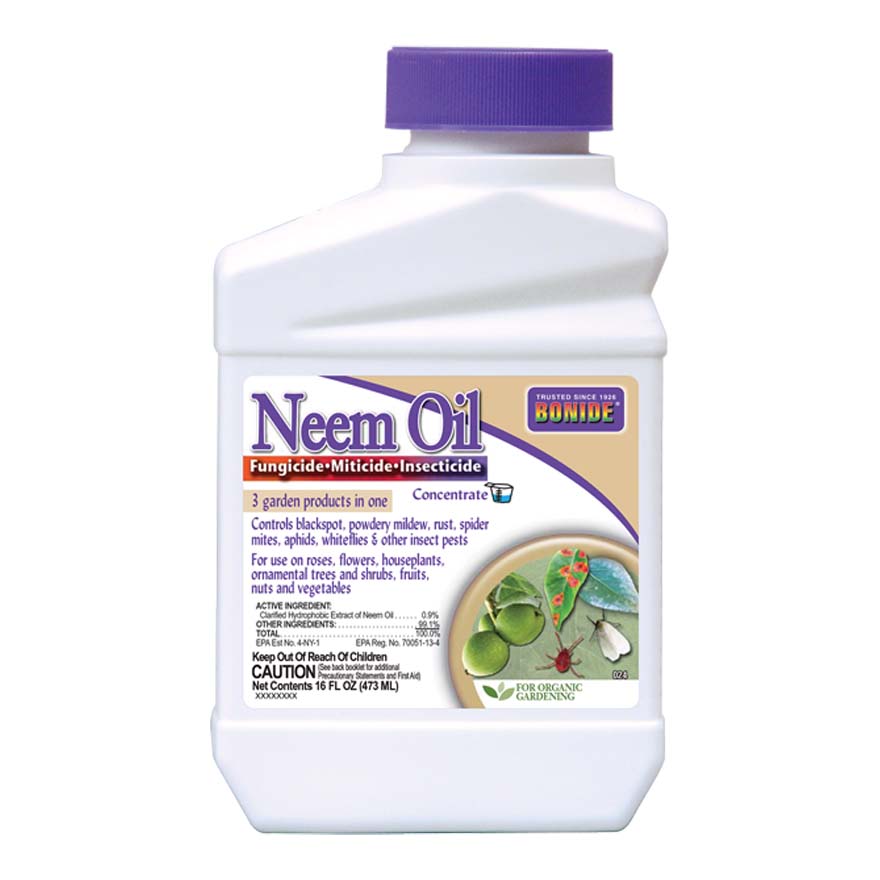
Neem Oil For Armyworms
Neem Oil is a great first line of defense for your lawn. If you are currently a Good Nature Organic Lawn Care client, we already treat your lawn with Organic Neem Oil. We love this oil as it has been used for hundreds of years in India and is valued for its medicinal properties. As a lawn treatment it coats the leaves and makes them unappetizing to pests like the Armyworm, but does not harm beneficial insects. If you see damage or signs of the armyworms, please let us know and we can do additional treatments for you. If you aren’t part of our lawn program, we recommend Bonide Neem Oil and you can treat your lawn on your own.
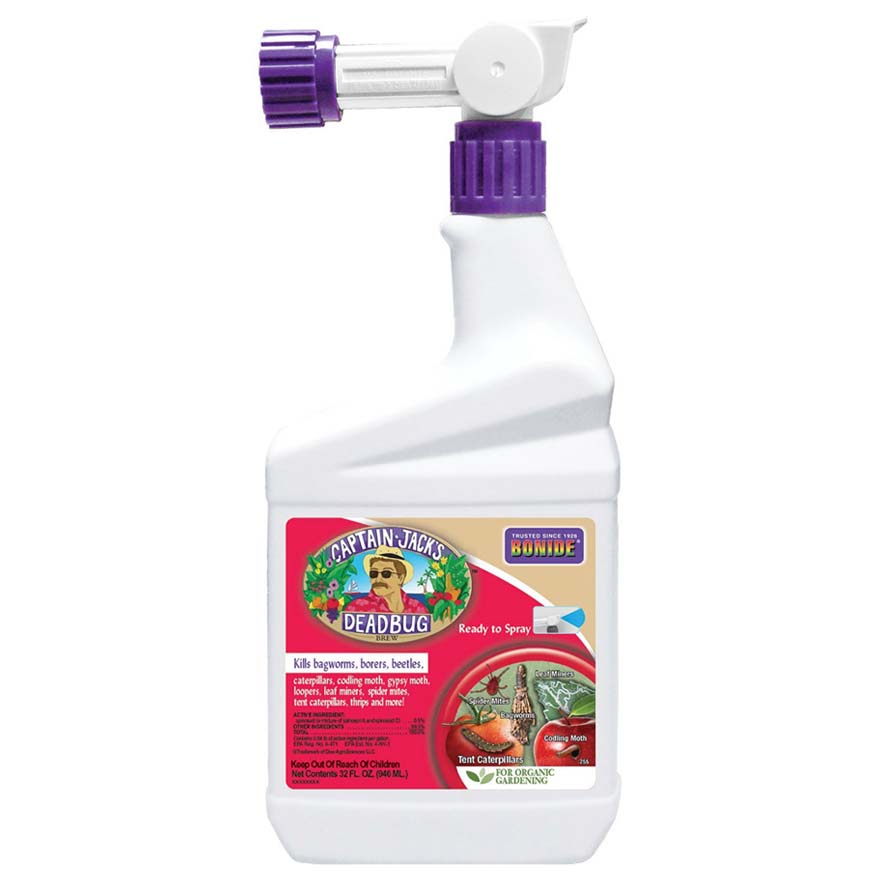
Spinosad for Armyworms
Additionally, if you have a bad case of Fall Armyworms, we recommend using multiple treatments of Spinosad. In a perfect world, you would make one application in the evening and another the following day. You may need to continue this treatment weekly during their most active period of the late Summer. Captain Jack’s DeadBug Brew, made from Spinosad, will not harm the beneficial insects that organic lawn methods protect because these insects do not chew on the plant leaves treated with Spinosad. Pollinators, such as honeybees and butterflies, will also not be affected. Spinosad does not persist for a long time in the environment, but breaks down after it’s been in sunlight.
Bacillus Thuringensis (Kurstaki) for Armyworms
Bacillus thuringiensis (Bt) is a natural product that is toxic to caterpillars, but not to other pests. It is something to consider. We also can recommend Safer Garden Dust, with the active ingredient Bacillus thuringiensis. Like Spinosad, this dust affects only bugs that ingest it and kills leaf-cutting caterpillars and other worms and insects.
Organic Treatments for Armyworms
If you are in the Good Nature service area, we can apply Armyworm suppression treatments that are a mixture of Organic Neem Oil and Spinosad to help minimize the damage. Your lawn may require multiple treatments.
What To Do If You Have Armyworm Damage?
If you had an infestation of Fall Armyworms that got out of hand, consider it time to start anew. We're happy to report that Fall Armyworms don’t usually fully kill grasses. They mostly chomp up the leaves or blades of grass and not the stolons or rhizomes of grasses.
How to Water If You Have Armyworm Damage
The problem is that without a healthy stand of green blades to cool the soil, the crowns of the turf grass plant (the point where new grass blades will regrow from) can get very hot and may die. To prevent your lawn from dying, we'd recommend watering during the heat of the day to cool things off. Normally we'd say not to water too frequently, but if your lawn has armyworm damage you should water the damaged areas every day during the hottest part of the day to keep them alive.
Seeding Your Lawn After Armyworm Infestation
In the worst cases of infestation, we recommend adding new seed via Slice Seeding. It never hurts to add better grasses to your lawn and this is a good opportunity to strengthen it with seeding. Our general recommendation for the Midwest region of the United States is a mix of 90% Turf Type Tall Fescue, 5% Kentucky Bluegrass, and 5% Microclover. We sell Tuff Turf Lawn Seed with the mixture of the Turf Type Tall Fescue and Kentucky Bluegrass as well as Microclover separately.















